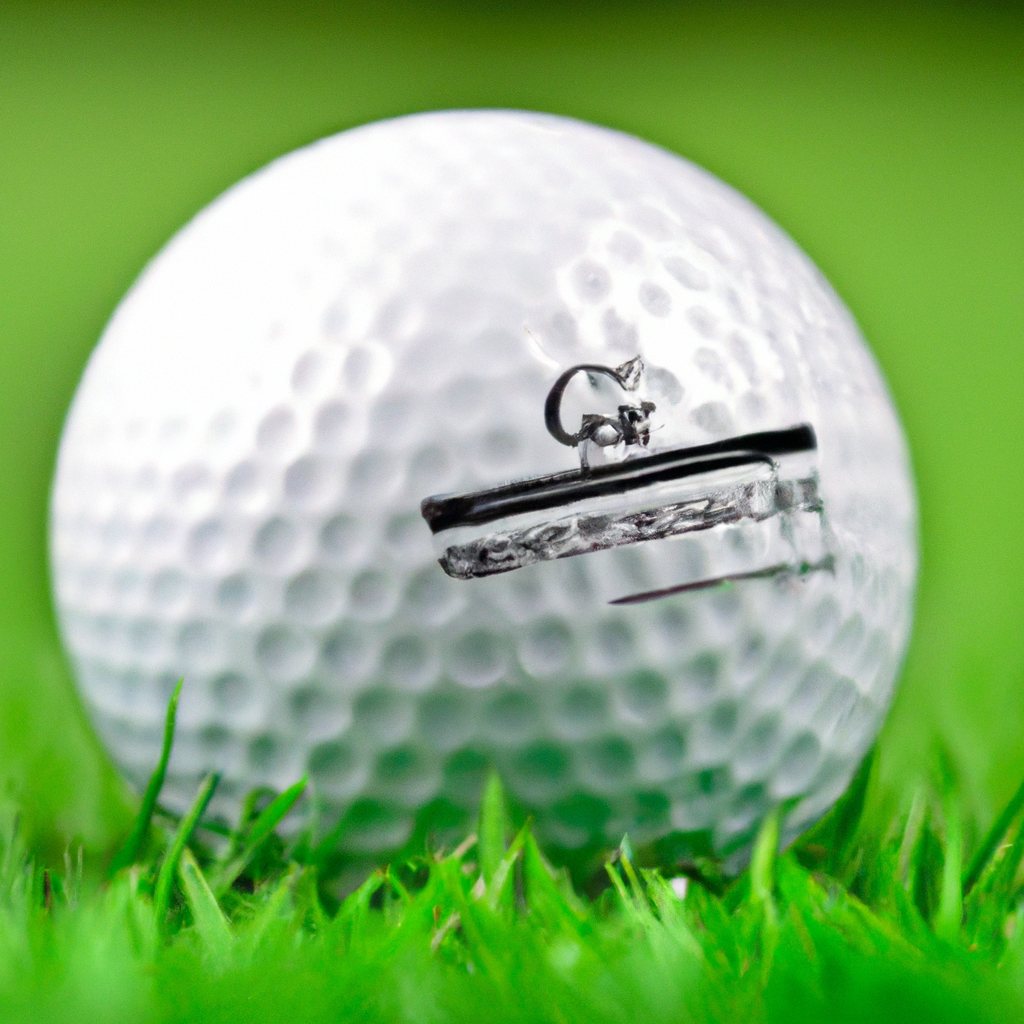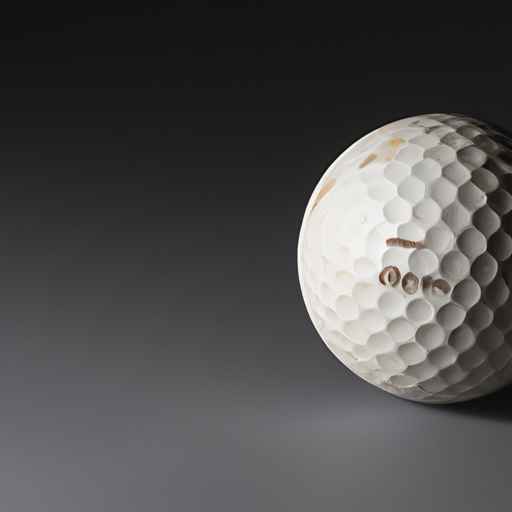We may earn money or products from the companies that may be mentioned in this post.
Have you ever wondered how long golf balls last? Maybe you’ve found some old golf balls in your garage and you’re unsure if they’re still good to use. Well, fret not! In this article, we will explore the longevity of golf balls and answer the burning question: do golf balls go bad? From the factors that can affect their lifespan to tips on how to prolong their usability, we’ve got you covered. So, let’s dive into the world of golf balls and find out just how long they can last!
How Long Do Golf Balls Last
If you’re an avid golfer, you’ve probably asked yourself this question at some point: how long do golf balls actually last? Whether you’re a beginner or a seasoned pro, understanding the lifespan of your golf balls is essential for optimal performance on the course. In this article, we’ll explore the various factors that affect the longevity of golf balls, signs that indicate a ball has reached the end of its lifespan, the impact of storage conditions on their longevity, how different materials affect durability, and tips for prolonging their lifespan. So, let’s explore the world of golf balls and discover just how long they last!

Factors that Affect the Lifespan of Golf Balls
Numerous factors can influence the lifespan of golf balls. First and foremost is the material from which they are made. Golf balls are typically made from either two-piece constructions or multi-layered designs, each with its own durability characteristics. Additionally, the quality of the materials used in manufacturing can determine how long a golf ball will last. Other factors include the golfer’s swing speed, the terrain on which the ball is used, and how frequently the ball is played with. By understanding these factors, you can better gauge the lifespan of your golf balls.
The Average Lifespan of a Golf Ball
While there is no definitive answer to how long a golf ball lasts, on average, they can be expected to last anywhere from one to six rounds of golf. However, this estimate can vary depending on the factors mentioned earlier. For example, a golfer with a slower swing speed may see their balls lasting longer compared to someone with a faster swing speed. Similarly, a golf ball used on a well-maintained, manicured golf course may last longer than one used on a rougher, more rugged terrain. Understanding these variables will give you a better idea of when to retire your golf balls.
Signs of a Golf Ball Reaching the End of its Lifespan
As a golf ball nears the end of its lifespan, certain signs become apparent. Look out for visible damages such as cuts, scuffs, or cracks. These imperfections can affect the aerodynamics and overall performance of the ball. Additionally, if you notice a significant decrease in the distance your ball travels or a lack of control during shots, it may be time to retire that ball. Always inspect your golf balls before playing and discard any that show signs of wear and tear beyond what is considered normal.
Effect of Storage Conditions on the Longevity of Golf Balls
Proper storage of golf balls can have a substantial impact on their lifespan. Extreme temperatures, whether hot or cold, can deteriorate the materials of the ball over time. It is best to store your golf balls in a cool, dry place where they are not exposed to direct sunlight or excessive humidity. Ideally, they should be kept at room temperature. Additionally, consider storing them in airtight containers to protect them from dust, moisture, and other environmental factors that may degrade their quality.
How Different Golf Ball Materials Affect their Durability
As mentioned earlier, golf balls can be made from various materials. The two most common types are two-piece constructions and multi-layered designs. Two-piece golf balls, which have a solid rubber core and a durable cover, are known for their strength and resistance to scuffing. On the other hand, multi-layered golf balls offer increased control and spin due to their softer mantle layers and urethane covers. While multi-layered balls may provide better performance, they tend to be slightly less durable compared to their two-piece counterparts. Understanding the material composition of your golf balls will help you choose the right ones for your needs and expectations.
Can Golf Balls Go Bad?
While golf balls don’t technically “go bad” in the same way that perishable food does, they can lose their optimal performance characteristics over time and with extended use. As golf balls are repeatedly hit, the core and cover materials begin to degrade, leading to a loss in distance, control, and overall playability. It’s important to note that even though a golf ball may still be physically intact, it may not perform as well as it once did. If you notice a decline in your shots, it may be time to replace your golf balls, even if they look fine externally.
Increased Durability in Premium Golf Balls
Sturdiness and durability are often factors that separate premium golf balls from their lower-priced counterparts. Premium golf balls are designed using advanced manufacturing techniques and high-quality materials that enhance their longevity. These balls are typically constructed with multi-layered designs, incorporating features such as thin covers and softer mantle layers. While they may come at a higher price tag, their increased durability and performance make them a worthwhile investment for serious golfers looking for consistency and longevity in their game.
Effect of Usage Frequency on Golf Ball Lifespan
The frequency with which you use your golf balls can significantly impact their lifespan. The more frequently you play golf and use the same set of balls, the faster they will wear out. This is especially true if you tend to hit shots with high swing speeds or play on rougher terrains. To prolong the lifespan of your golf balls, consider rotating between multiple sets during your rounds or practice sessions. By giving each set some rest time, you can extend the overall lifespan of your golf balls and ensure consistent performance on the course.
The Importance of Properly Maintaining Golf Balls
Proper maintenance is key to keeping your golf balls in good condition for as long as possible. After each round of golf, take a few minutes to inspect your golf balls for any signs of damage or wear. If you notice scuffs or dirt on the surface, clean them gently using warm soapy water and a soft cloth or towel. Avoid using abrasive materials or harsh chemicals that could further damage the ball. Additionally, it’s essential to handle your golf balls with care and avoid throwing or hitting them against hard surfaces, as this can lead to cracks and internal damage.
Tips for Prolonging the Lifespan of Golf Balls
Now that you understand the various factors that influence the lifespan of golf balls, here are a few tips to help you prolong their longevity:
- Avoid hitting golf balls into hard surfaces such as trees, rocks, or cart paths, as this can cause significant damage.
- Clean your golf balls regularly using warm water and a soft cloth to remove dirt, grass, or debris that could affect their performance.
- Store your golf balls in a cool, dry place, away from extreme temperatures and direct sunlight.
- Rotate between multiple sets of golf balls to distribute the wear and tear evenly.
- Consider investing in premium golf balls that are designed to offer increased durability and longevity.
- Replace golf balls that show visible signs of damage or experience a significant decrease in performance.
By following these tips and taking proper care of your golf balls, you can maximize their lifespan and ensure consistent performance on the course.
In conclusion, the lifespan of golf balls can vary depending on several factors, including the materials used, storage conditions, usage frequency, and overall maintenance. While there is no one-size-fits-all answer, understanding these factors will help you determine when it’s time to retire your golf balls and invest in a fresh set. By paying attention to signs of wear and tear, storing them correctly, and properly maintaining them, you can prolong the lifespan of your golf balls and enjoy optimal performance on the green. Happy golfing!
